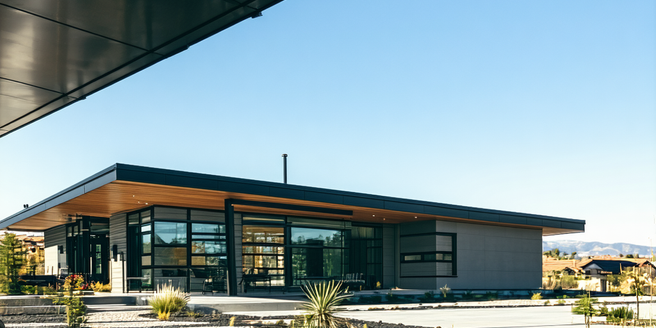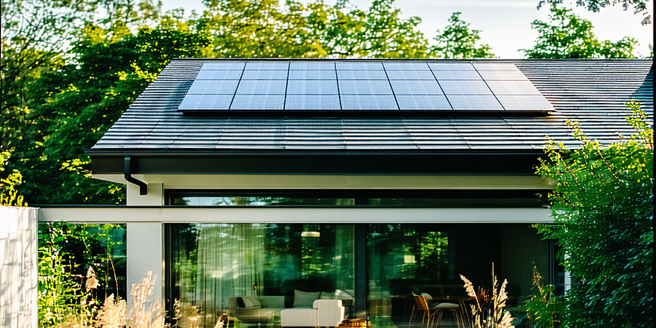Lower Maintenance Home Designs

Understanding Low Maintenance Living
| Concept | Explanation | Benefits |
| Durable Materials | Utilizing tough materials that resist wear and tear | Reduces need for regular repairs |
| Smart Technology | Automation systems to manage house functions | Increases convenience and efficiency |
| Minimal Landscaping | Using native plants that require less care | Saves time and resources |
| Energy Efficiency | Incorporating systems that use less power | Low running costs |
| Water Conservation | Choosing appliances that use less water | Cuts utility bills |
| Weather Resistance | Using materials that withstand weather extremes | Longevity of home exterior |
Choosing Durable Building Materials
When designing a low maintenance home, the selection of durable building materials plays a pivotal role. Materials such as metal roofing, fiber cement siding, and composite decking are optimal choices due to their long lifespans and resistance to wear and tear. These materials require minimal upkeep, thus freeing homeowners from regular painting, staining, or repairs. For interior spaces, options like ceramic or porcelain tiles, quartz countertops, and hardwood floors provide robust surfaces that can withstand daily use. Choosing materials that are not only aesthetically pleasing but also engineered for longevity can significantly reduce the time and money spent on maintenance. This thoughtful selection process ensures that the home remains in pristine condition for years to come, enhancing comfort while preserving its aesthetic and functional value with minimal intervention.
Incorporating Smart Home Technology
The advent of smart home technology has revolutionized the way we manage our living spaces, offering convenience and reducing the need for hands-on maintenance. By incorporating automated systems such as programmable thermostats, smart lighting, and home security devices, homeowners can efficiently control various functions with ease. Automated systems can also alert homeowners to potential issues, like water leaks or security breaches, allowing for quick intervention before problems escalate. Furthermore, smart appliances, like refrigerators and dishwashers, adjust their energy use based on consumption patterns, optimizing efficiency. This integration not only enhances the living experience but also ensures that the home’s systems are running smoothly, reducing the need for frequent manual adjustments and routine checks.
Opting for Minimalist Landscaping
Minimalist landscaping is an excellent choice for those seeking lower maintenance homes, as it reduces the time and effort typically spent on yard upkeep. By using native plants, which are suited to the local climate and soil, the need for regular watering, fertilizing, and pest control is minimized. Hardscaping elements such as stone paths, gravel beds, and raised planters can also contribute to a low-maintenance yard while providing an aesthetic appeal. Additionally, incorporating features like rainwater harvesting and drip irrigation systems can further reduce the reliance on manual watering, ensuring that the landscape remains lush with minimal intervention. With strategic planning, minimalist landscaping can create a sustainable and visually pleasing outdoor space without the demands of traditional gardening.
Energy-Efficient Solutions for Easy Upkeep
Energy-efficient solutions are a cornerstone of low-maintenance home designs, helping homeowners save time and reduce costs. Implementing elements such as double-glazed windows, energy-efficient HVAC systems, and solar panels can significantly cut down utility bills while maintaining home comfort levels. Additionally, smart home technology can integrate seamlessly with these solutions to optimize energy usage even further. These advancements often feature long-lasting designs that require less frequent servicing, easing the burden on homeowners’ schedules. Appliances with high-efficiency ratings ensure fewer breakdowns and obsolescence, while energy-efficient lighting lessens the need for regular bulb changes. By investing in energy-efficient home upgrades, residents can enjoy sustainable living that aligns with modern priorities, promoting both economic and environmental benefits for a low-maintenance lifestyle.
Water-Wise Fixtures and Appliances
Integrating water-wise fixtures and appliances in home design is an effective way to maintain efficiency with minimal effort. Modern fixtures such as low-flow toilets, water-saving showerheads, and efficient dishwashers reduce water consumption without sacrificing performance. These devices not only lower utility bills but also decrease the environmental footprint of the household. Furthermore, opting for front-loading washing machines and grey water recycling systems can amplify these savings. By making these environmentally conscious choices, homeowners contribute to preserving water resources for future generations. Many water-efficient appliances are designed to require less frequent maintenance due to their sturdy builds and advanced technology. Thus, homes with water-wise designs represent a commitment to sustainable living by conserving a precious resource while reducing maintenance needs.
Selecting Long-Lasting Flooring Options
Choosing long-lasting flooring options is integral to creating a low-maintenance home environment. Materials like engineered hardwood, luxury vinyl, and ceramic tiles are not only durable but also resistant to common issues such as scratching, moisture damage, and staining. These materials are designed to withstand the daily wear and tear that comes with active households. These flooring types require less frequent cleaning and upkeep compared to traditional carpets, which can harbor dust and stains. Many long-lasting flooring options are available in a variety of finishes and styles, providing aesthetic flexibility without compromising on durability. By investing in high-quality flooring, homeowners can ensure longevity in their interiors, resulting in fewer replacements and less maintenance effort over time.
Efficient Space Utilization in Home Design
Efficient space utilization is critical in low-maintenance home designs, optimizing functionality and reducing clutter. Thoughtful design consideration can lead to multipurpose rooms, built-in storage solutions, and flexible furniture arrangements that adapt to changing needs. By maximizing every square footage, these designs often result in reduced cleaning and maintenance burdens, as spaces are intentionally organized and easier to manage. Additionally, incorporating adjustable shelving and modular furniture can further enhance practicality. Open floor plans enhance natural lighting and ventilation, which can lower utility demands and promote a healthier indoor environment. Prioritizing efficient space utilization not only elevates the functionality of a home but also assembles a harmonious living space that minimizes upkeep requirements while enhancing daily living comfort.
Utilizing Weather-Resistant Exterior Finishes
Weather-resistant exterior finishes are essential for homes in regions with harsh climates, offering durable protection against elements like wind, rain, and sun. In addition to protection, these materials can significantly increase a home’s curb appeal. Choosing materials such as stucco, fiber cement, or weather-treated wood can offer aesthetic appeal and longevity. These finishes are designed to resist fading, chipping, and cracking, reducing the frequency of repainting or replacements. Incorporating weather-resistant elements like aluminum or vinyl windows further enhances the home’s perimeter defense, keeping maintenance efforts to a minimum. By securing the home with robust exterior finishes, homeowners can avoid costly repairs and mitigate potential structural damage caused by environmental factors, ensuring a durable and enduring home shell.
Designing for Future-Proof Adaptability
Designing for future-proof adaptability is a forward-thinking approach to low-maintenance homes, accommodating changing lifestyle needs and new technologies. Features such as modular room designs, moveable walls, and smart wiring systems allow for easy modifications as family dynamics evolve. The key to achieving this is incorporating flexibility into the initial design. It is crucial for homeowners to envision potential changes in their lifestyle and technology needs. Future-proofing considers technological advancements by integrating spaces suitable for emerging smart devices and sustainable technology. This approach minimizes the need for major renovations, preserving structural integrity and reducing long-term maintenance. Homes that anticipate future needs offer a living experience that supports both current comforts and tomorrow’s innovations, providing a resilient framework that adapts seamlessly without frequent and labor-intensive adjustments.
